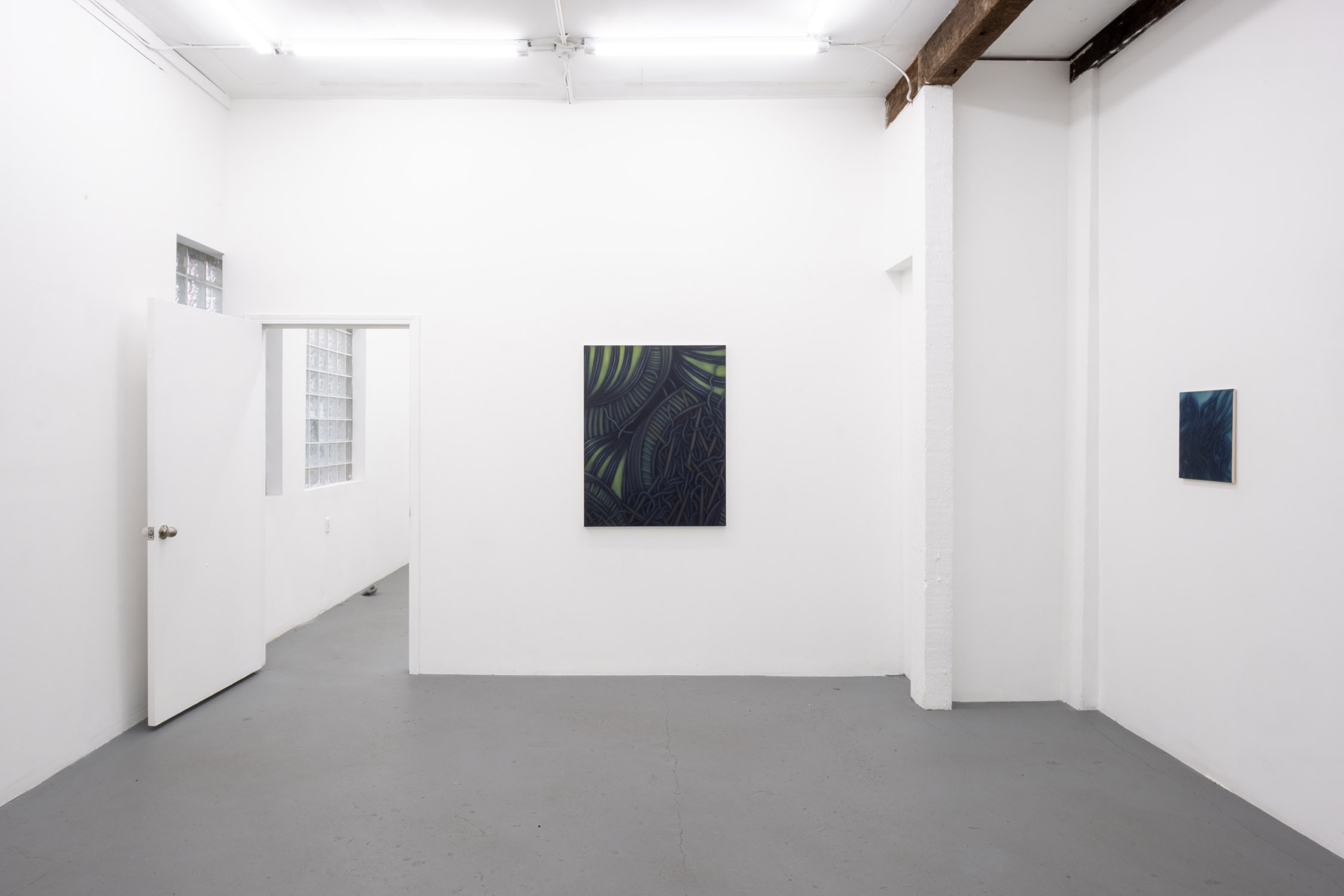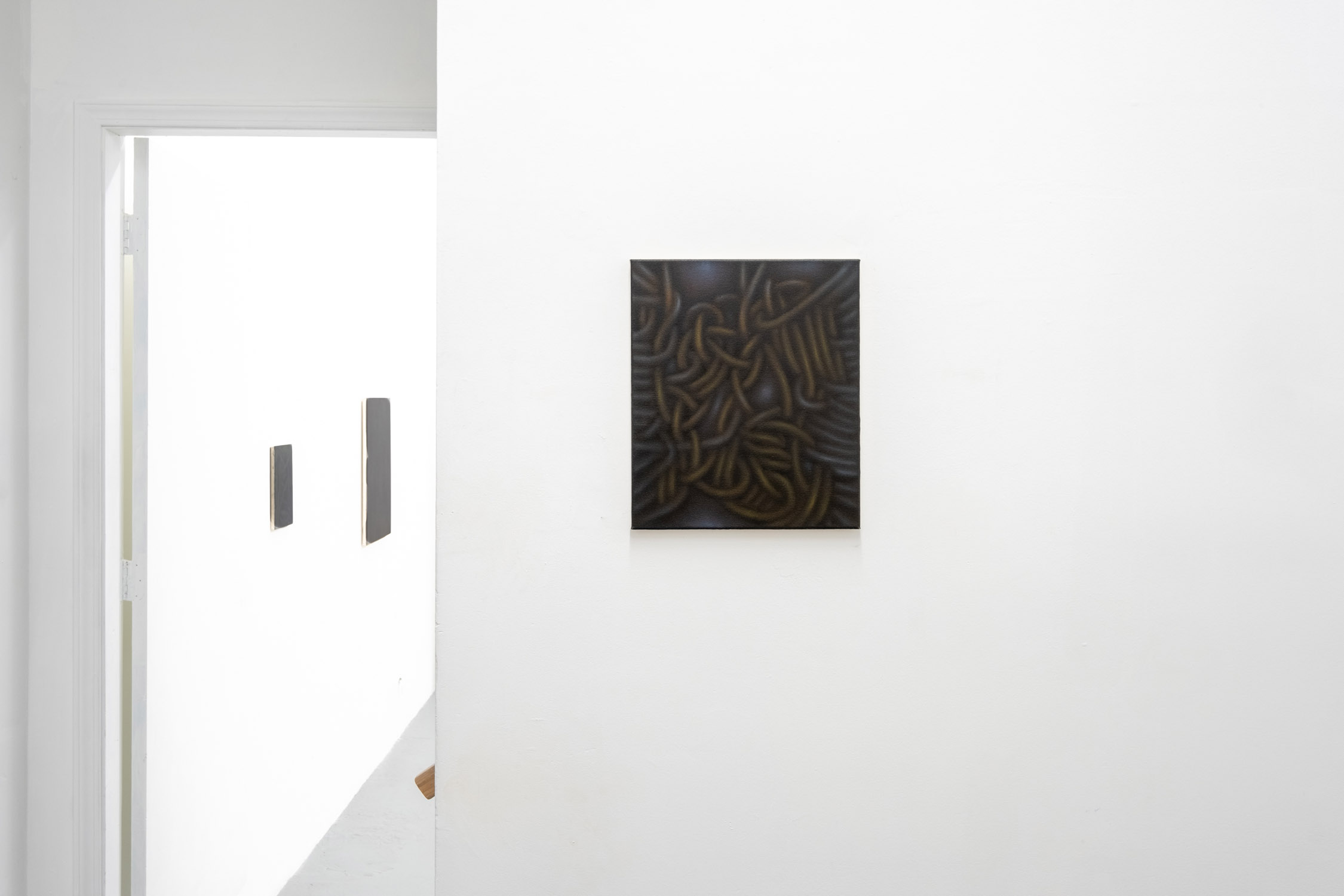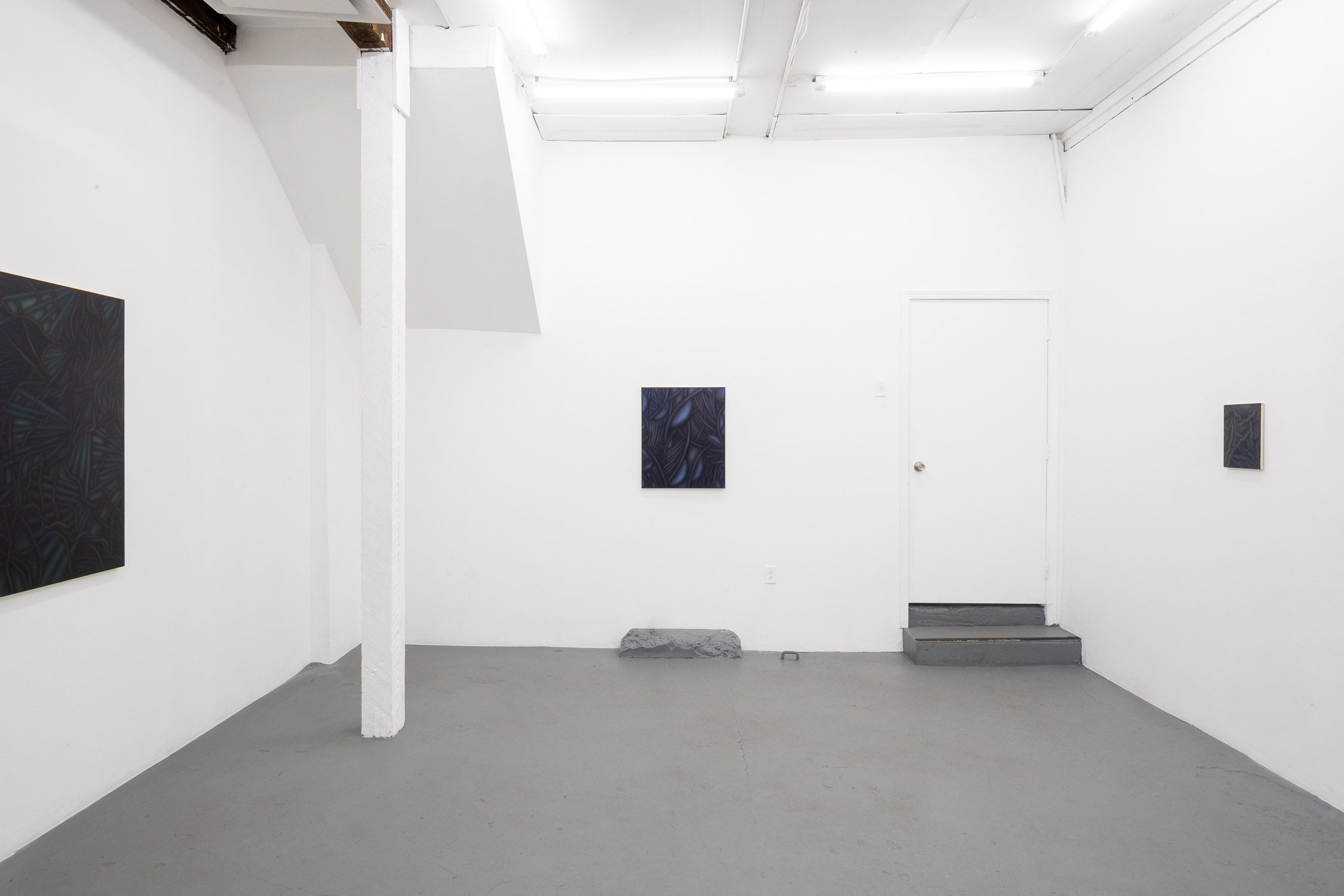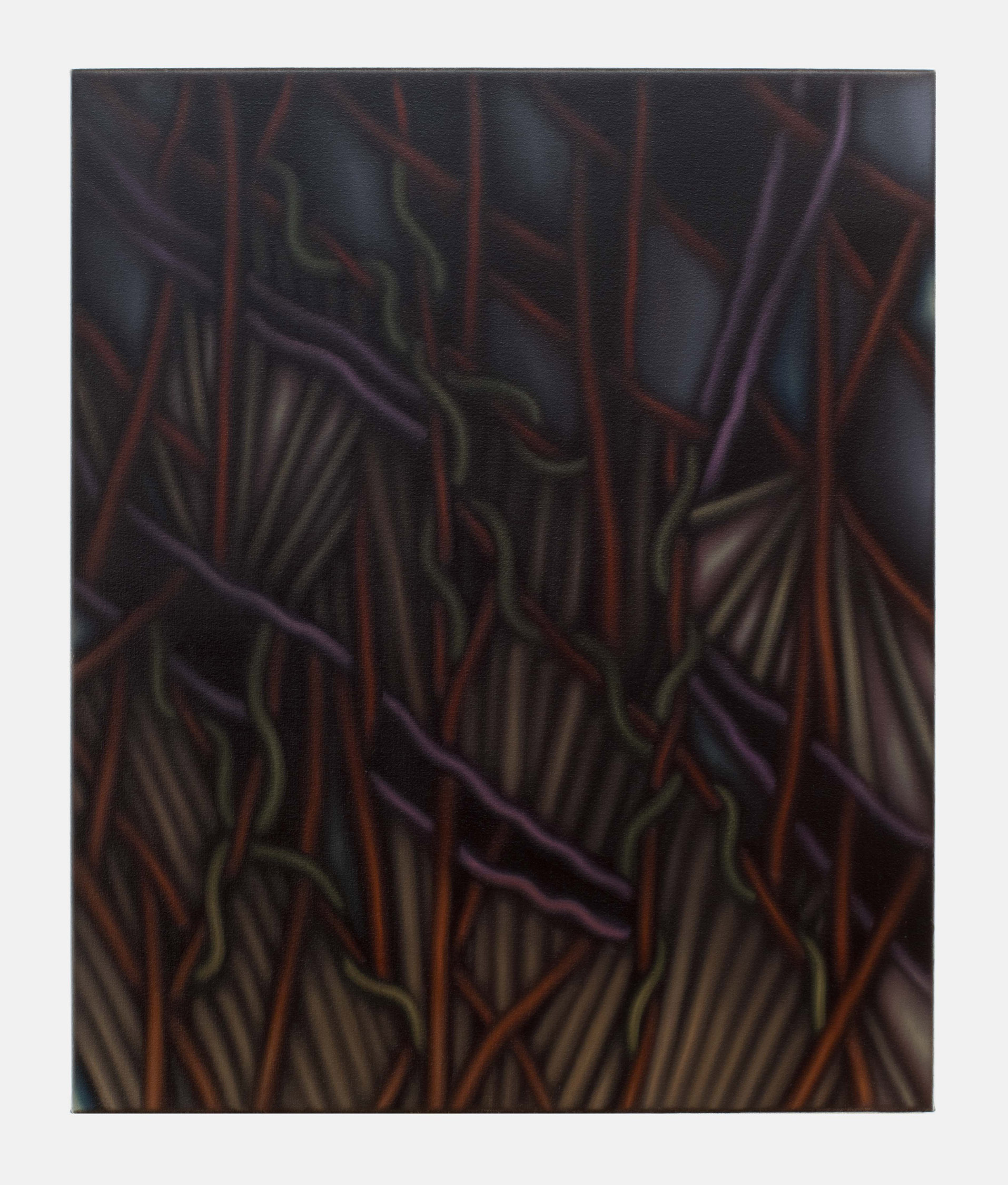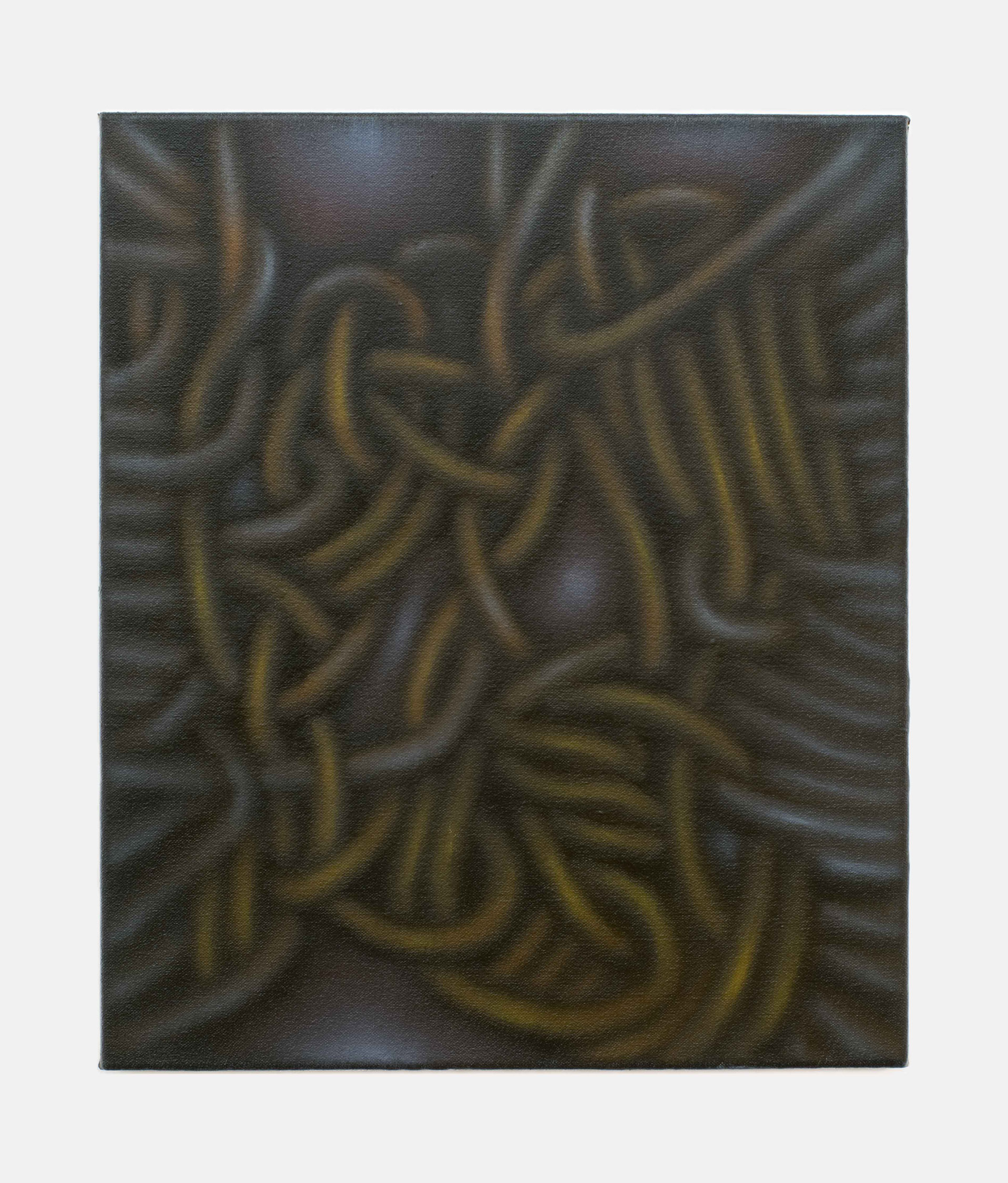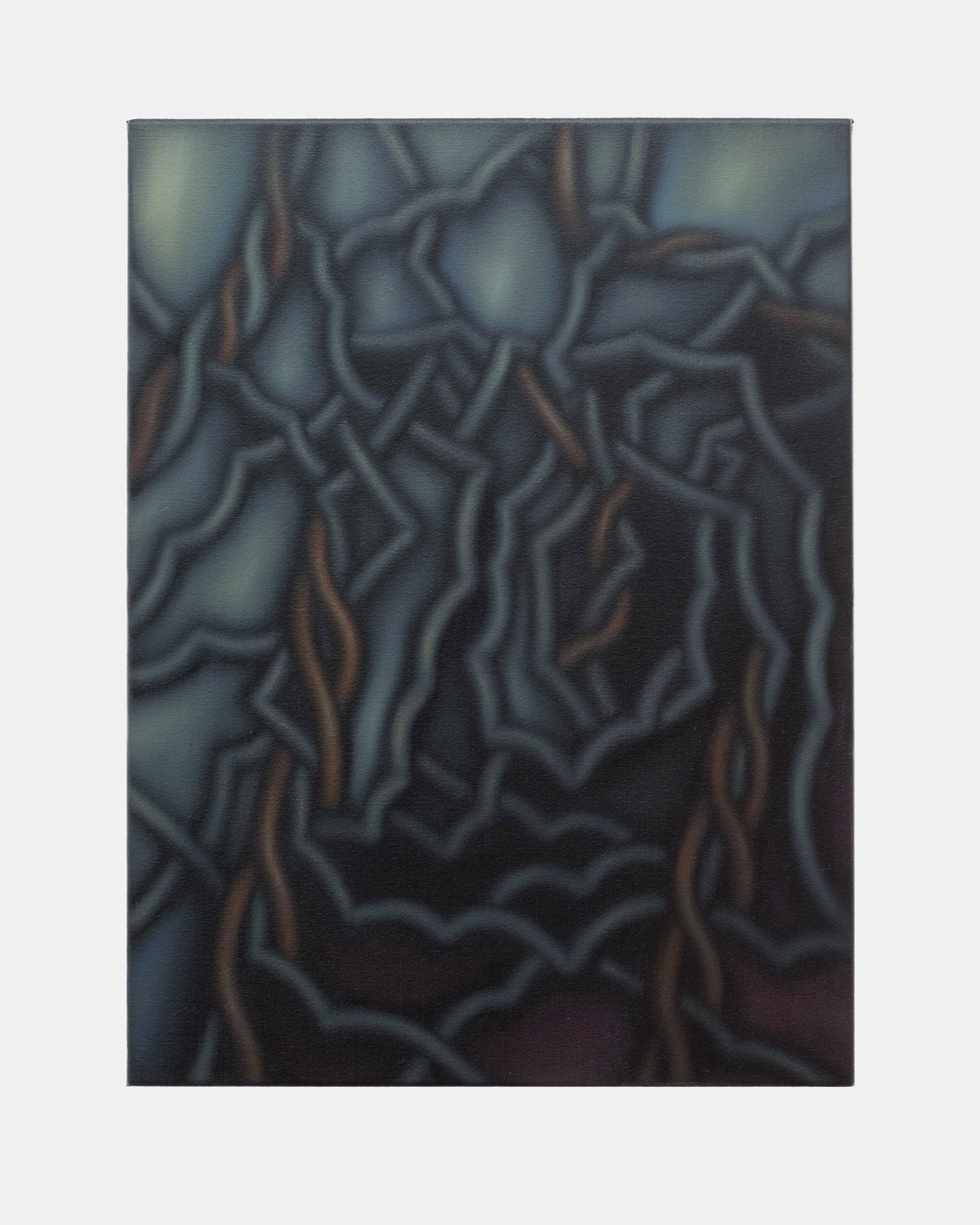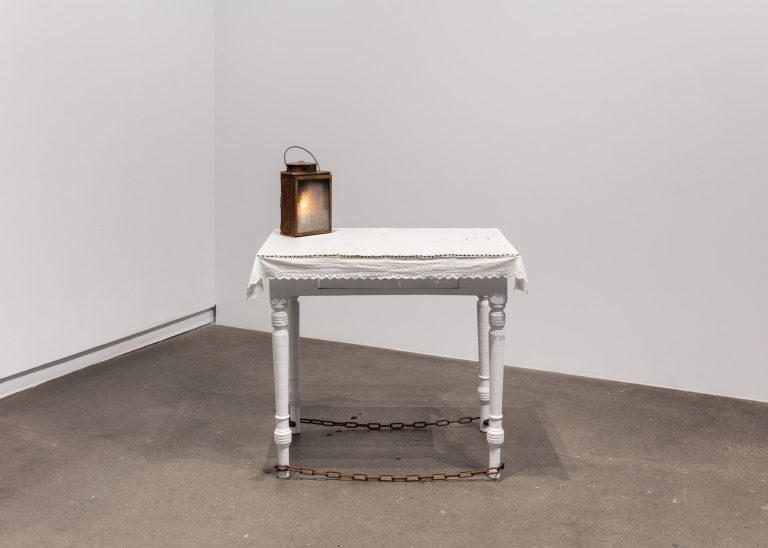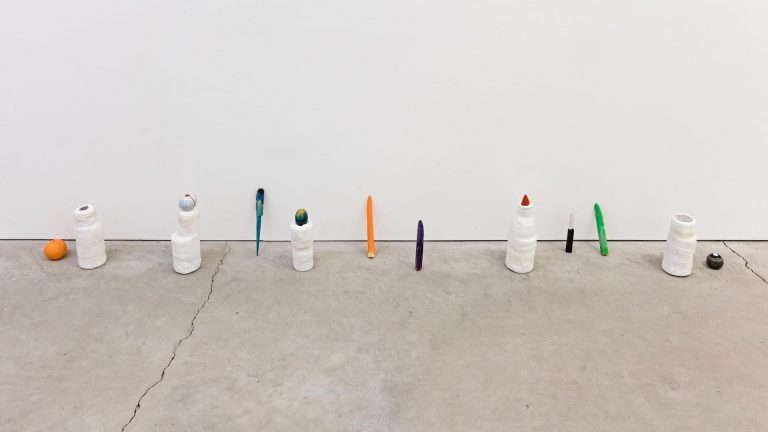Erin’s brushes are coated in a particular grey violet–the average of all her pigments. She places strokes of vibrant paint over a dark initial layer and the composition takes shape. In the following phases, paint is swept away, added back, and swept away again, melding the paint into a single continuous surface. With each successive phase the paint settles and resists movement; the painting must end before it is dry. Outside of preparing the canvas, there is no physical or digital preparation. No sketches or reference imagery. The paintings are created impromptu.
As part of her time-sensitive process, there are certain limitations she is inclined to abide by. The size of the brush used, for example, often determines the width of the “lines” in her paintings. But if a prominent feature of process art is to make obvious its creation, or the passage of time, Erin obscures these features entirely. Her work has been mistaken as airbrushed. When it’s disclosed that they are made in a day, the response is often incredulous. By what is essentially controlled erasure, she hides her innumerable actions within themselves, folding them together on the surface, compressing action and time into micrometres.
As the sole tether between her paintings and the material world, Erin captures inner sensations and hallucinations. At the same time, each painting, as a sustained and singular event, is a record of the given day and its influences: conversations, natural light, the weather, etc. Her process makes the work instantly recognizable as her own, but closer examination reveals that each painting is highly individual, concerned with novel interactions.
One such point of interaction in the paintings is the quality of depicted light. In Dew, the light appears to shine from the direction of the viewer. It is a cold and weak twilight, or the inadequate flashlight from a phone. In both Cathedral and Reminders 1-7, the light is cavernous, like an atmospheric light reaching a cave below. As a trick of the eye, the orientation of the light in her paintings can make the composition appear to unnaturally float, fall, or separate.
The show is named after a painting of which there are 7 copies, Reminders 1 through 7. Never having repeated a painting before, they represent to Erin the experience of an anomaly. In the aftermath of loss, respite from grief arrives only as a roused half-dream. Every encounter is inextricable, and everything is a reminder of the before. The colour drains from waking life as the toll of traveling back in time over and over–and making sense of the past takes possession of the present.
Written by Landon Lim
